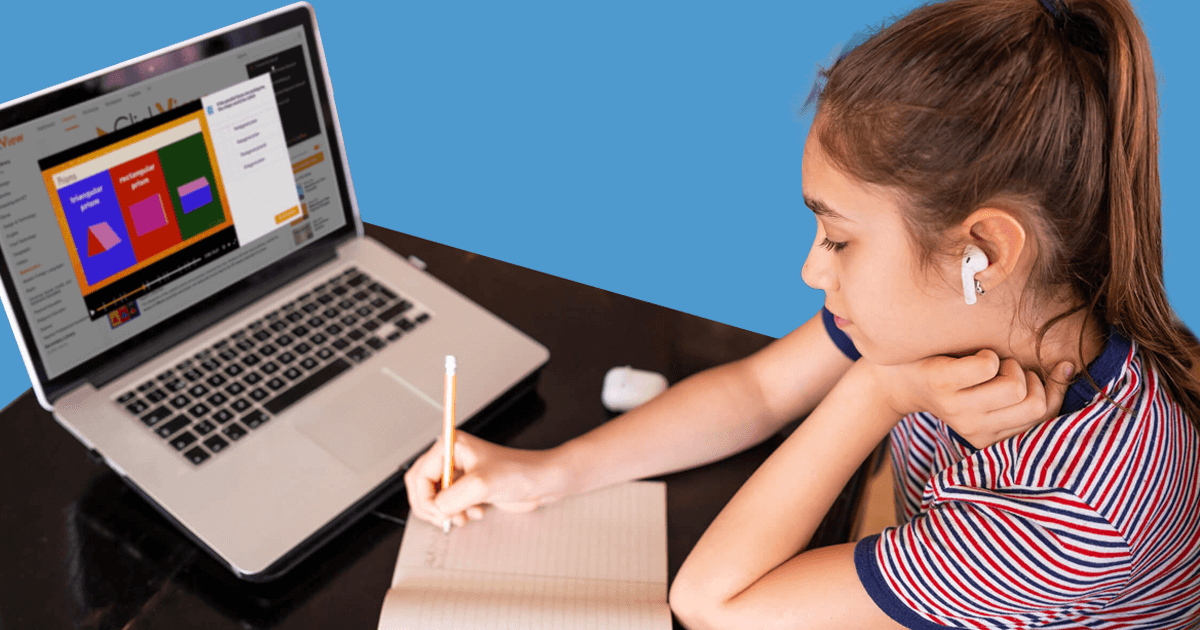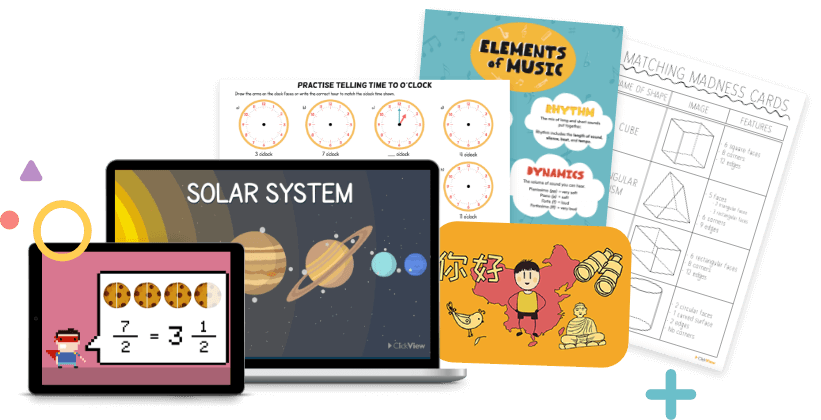Strategies to help with online learning: Primary
Developing effective distance learning strategies will help to prevent stress during unpredictable periods of enforced school closures. Ofsted offers advice on enriching academic opportunities online through the innovative use of technology. The strategies outlined will help you prepare successful learning experiences for your class in an online educational environment.
7 strategies for online learning in the elementary classroom
1. Be mindful of tech-overload
2. Fun warm-up activities
3. Use audio books
4. Digitising worksheets
5. Facilitate the learning process
6. Self-assessment and feedback
7. Use what is already available
1. Be mindful of tech-overload
The Office for National Statistics reported that primary school pupils learning would be dependent on instruction from parents. Further, the amount of content covered remotely will be considerably less than in-class teaching. For the sake of yourself, your students, and the parents and caregivers who will probably be facilitating online learning at home, do your best to keep things simple.
Advice on making sure families are ready for remote learning includes:
- Aiming to use computer applications that your class is most familiar with
- Avoid implementing too many new technological resources and complicated learning software
- Supporting parents on the use of digital tools
- Creating an online community to enhance learning
- Being aware of vulnerable student’s access to online education
- Communicating about services available to enable access (e.g., Get Help with Tech Programme)
Also, consider that using unfamiliar tools and software could prove stressful and daunting. Allow time for everyone to develop their digital literacy. Once everyone has become more confident with managing remote learning, gradually introduce new online applications.
2. Fun warm-up activities
Teachers have found that communication and maintaining a connection with their pupils has been vital to success while teaching remotely. At the beginning of your lessons, short games can be a great way to give everybody a boost of energy and positivity that they might be needing.
Some good ideas include:
- At-home show-and-tell where chosen students can show everyone their pets or something cool from their house that they wouldn’t be able to bring to school
- Staycation where students choose background images of countries they would like to visit and have everyone guess where they are
- Class aerobics session
- “What’s for breakfast?” game where a student describes what they ate for breakfast, and everyone has 10 seconds to draw it. The students choose the most delicious looking picture
- Eye Spy using things that students can see in each-others backgrounds
- Find something that begins with ‘A’ where students find an object that matches the description given by the leader
- Simon Says
- Charades
- Dress-up day to a chosen theme or freestyle
Starting a lesson in this manner can help make sure you see a lot of little faces every day because it will be fun for them.
3. Using audio books
To supplement online learning, especially for early primary students learning to read, consider using audiobooks from Story Online, Unite for Literacy or Learn Out Loud. They feature customisable search options so that you can find content for different grade levels and subjects, and they are free to use.
Audiobooks can provide a break from staring at a screen, allowing your students to relax and enjoy the engaging content you have chosen.
You can then assign creative activities that can be completed offline, such as:
- Drawing pictures of the characters in the story
- Designing a poster about the subject
- Creating models of the setting
- Answering simple comprehension questions
- Holding a class discussion of the text
- Storyboarding stages of the story
Children enjoy being read to, and by selecting exciting texts, you can help to inspire their curiosity and love of reading.
See also OECD recommended sites: Deaf World Around You (with texts including sign language), Digital Library (with graded reading in 40 languages), and Feed the Monster (with phonic games).
4. Digitising worksheets
Learning how to make commonly used classroom worksheets accessible online can help students complete work with the benefit of a familiar format.
You can start by using a scanning device or a scanner phone app to scan and upload textbook pages and worksheets to your virtual classroom. Your students can be given access to the uploaded materials to print out and complete or write their responses using pencil and paper.
As you become familiar with the technology available, you can edit and customise your worksheets and enable students to complete and submit them online so that the entire process is paperless.
Teachers can also mark students’ work and provide feedback easily online. There are plenty of tutorials online to help you get up to speed with available technology.
5. Facilitate the learning process
A recent study conducted by the University of Southampton indicated a high degree of learning loss during the lockdown period. You will need to adjust your usual expectations and determine the most important goals your students need to achieve while away from the classroom.
Reportedly, achieving the best possible outcomes when your students are at home is aided by:
- Frequent communication with parents/caregivers about learning goals
- Making content fun and relevant to increase engagement
- Encouraging active, hands-on learning
- Scaffolding using the “I do, we do, you do” method
- Displaying examples of completed work
- Involving students in running lessons
- Providing prompt feedback
It has been suggested that planning in weekly blocks can make things more manageable. We need to remember that students will complete work at different speeds and have varying degrees of adult support and supervision. By delivering lessons and activities in manageable chunks, you will help maintain student focus and improve their grasp of a targeted element of the topic without overwhelming them.
6. Self-assessment and feedback
Because you will not be there to monitor your student’s progress regularly, be sure they can easily communicate how they find the assigned work.
Strategies to improve virtual feedback can involve:
- Assigning emojis values that indicate a student’s perceived level of achievement:
😁: I can show my friends how to do this
😊: I can do this by myself
😉: I can do this with some help
🙄: I don’t understand, yet
You can even print them out as flashcard sets for each student; during live classes, they can hold up the emoji they most feel like.
- Using Google Forms to make worksheets self-marking (see tutorial) so that your students get instant feedback on their work
- Using messaging functions with older students to let them communicate with you directly
- Scheduling calls or video chats to individual students (speak to parents/caregivers about appropriate times)
- Creating interactive educational videos to promote self-regulated learning and immediate feedback (Access our free DfE recommended resources here)
Receiving quick, consistent feedback will be key to maintaining confidence and reducing anxiety during periods away from the classroom.
7. Use what is already available
The Department of Education has prepared many online resources to help teachers with online education. ClickView can be used with Microsoft teams and Google Classroom so you can deliver curriculum mapped content for your students quickly.
Some amazing educational sites for KLA subjects available to you during this time include:
- Math: Prodigy gamifies math to make learning fun and more effective.
- Science: National Geographic Kids has engaging content for topics kids love learning about, such as dinosaurs and animals.
- P.E.: Just Dance Channel and Kidz Bop are funky videos that teach dance moves to ensure your students get some exercise.
- Music: Flute Master – Learn the Recorder is a fun, free app (there are optional in-App Purchases) that teaches the recorder for music lesson time (I mean, you put up with the recorder in school, now it’s mum and dad’s turn).
- Art: SkillShare and Sparketh offer some great children’s art lessons to get their creative juices flowing.
- Languages: Duolingo has apps for age-appropriate language learning that are colourful, fun, and wildly popular.
The benefits include free, ready-made online content with engaging games and themes customisable to your needs and include quizzes to check on your students’ progress. They often have a downloadable app to give your students more options than a computer to complete schoolwork.
Finally, we have a comprehensive teacher development webinar explaining how you can use our videos and resources for remote learning. You can also find free teaching resources and lesson plans suitable for primary students that are highly engaging and linked to curriculum outcomes.






